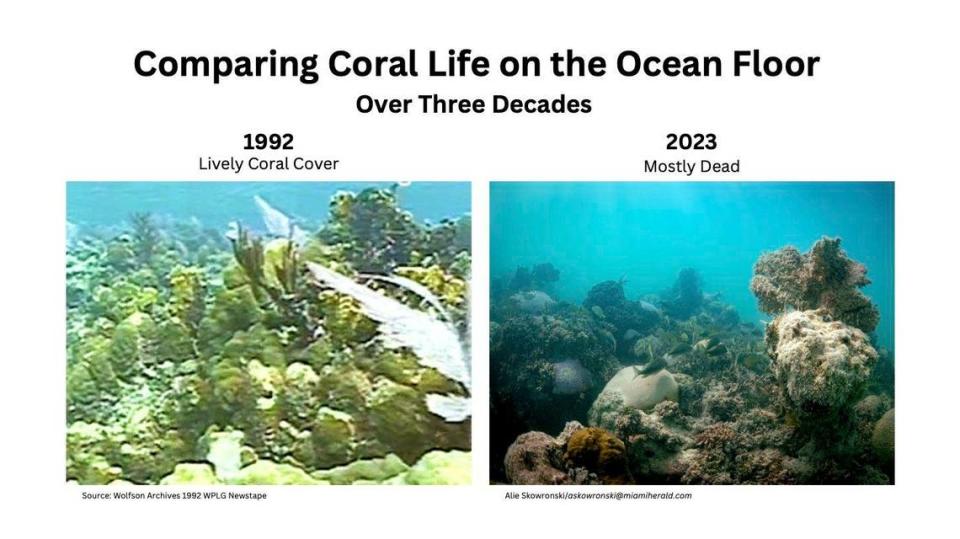Last year’s heat was deadly for Florida corals. Scientists hope this year will be different
Last year’s historic marine heat wave turned Florida’s coral reefs into bleached boneyards. And with temperatures rising this summer, scientists worried 2024 could be a repeat disaster for the fragile underwater ecosystems.
But the latest data show that lower-than-expected temperatures and recent storms may give Florida’s reefs a fighting chance this summer.
“By this period last year, we already had a two week period in the middle of June where some of the reefs got up to 94-95 degrees,” said Andrew Bruckner, the Florida Keys National Marine Sanctuary research coordinator, in a press conference on Monday. “We had a lot of extensive bleaching throughout the Florida Keys, and we also started seeing a lot of corals die off. We haven’t seen any of that this year at all.”
This year’s temperatures are still not ideal for corals, but remain better than last year. Bruckner said the beginning of this year was hotter than 2023 and the hottest they’ve seen, but it was in the winter when it was still relatively cold and none of the coral started bleaching.

He said there was a 12-week period of coral-stressing high temperatures earlier this year that was hotter than last year, but it ended in June. The temperatures are still above what they should be, but not as bad as 2023.
The corals that suffered the largest amount of mortality last year haven’t even started failing, he said.
In February, the National Oceanic and Atmospheric Administration’s Mission: Iconic Reefs surveyed nursery-raised and reef-outplanted corals in the Florida Keys to look at the impacts of summer 2023 on reefs. It found that less than 22 percent of about 1,500 outplanted staghorn coral remained alive across five of the seven reefs surveyed and that less than five percent of about 1,000 outplanted elkhorn coral were alive, according to NOAA.
READ MORE: Big blow to Florida reef recovery: First survey after record heat finds coral graveyards
Bruckner said sea surface and sea bottom temperatures have started to climb again within the last week. They are above the bleaching threshold temperature even ahead of when temperatures peak in August. When corals are exposed to these temperatures they will ultimately bleach and potentially die.
The NOAA Coral Reef Watch program issued a level one bleaching watch — the first on a scale from one to eight, including three new colors added last year for extreme heat — in early June that went down to a no-stress level at the end of the month and is now back up to a watch level.

“There are still predictions that if this continues this way we could get up to an alert level two potentially right now by August,” Bruckner said.
Recent hurricanes and storm systems have actually helped the corals. They can cause a lot of physical damage to reefs, but are beneficial by cooling down waters.
“Hurricanes are good from the fact that they tend to bring some deeper water that’s cooler, they flush out the system, they remove a lot of algae, a lot of these other things that you don’t want, so they can be good from that extent,” Bruckman said.
READ MORE: South Florida got a (small) break from record heat in June. Don’t get used to it
However, Ken Nedimyer, Reef Renewal USA technical director, said the no-name storm system that flooded South Florida mid-June wasn’t completely helpful. The heavy rains flooded Biscayne Bay causing water full of sediments to go south onto the corals. Brown sediment found its way onto corals, choking them in the upper Keys. But the cooled-down waters still helped.
“Wind and rain we got a couple of weeks ago really helped and that makes all the difference in the world,” Nedimyer said.
NOAA and experts are studying different restoration efforts this year such as giving corals supplemental food when it’s hot, putting lights next to reefs to track food and temporarily moving corals to deeper, cooler water.


